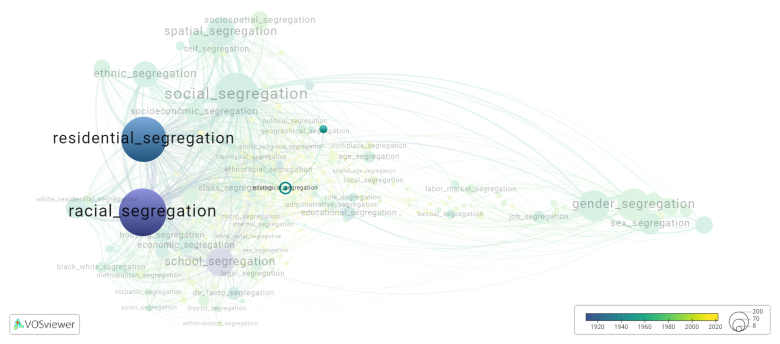Ecological segregation
Date and country of first publication[1]
1954
United States
Definition
Ecological segregation refers to the process by which different species within a community divide and occupy different ecological niches based on their specific requirements and adaptations. It typically occurs when two or more competing species share the same habitat but differentiate themselves in terms of resource use, habitat preference, or other ecological factors.
Ecological segregation helps to reduce competition among species by allowing each species to utilize different resources or occupy different habitats. This can lead to increased species diversity and overall stability within ecosystems. It also promotes coexistence and reduces the likelihood of one species dominating and pushing other species to extinction.
There are different forms of ecological segregation, including spatial segregation, temporal segregation, and resource segregation. Spatial segregation occurs when different species occupy different physical areas within a habitat. Temporal segregation involves species using the same habitat but at different times, such as nocturnal versus diurnal activity patterns. Resource segregation refers to species utilizing different resources within the same habitat, such as different food sources or different parts of a tree or plant.
Ecological segregation can be influenced by various factors, including competition for resources, predation, habitat availability, and evolutionary adaptations. It is an important mechanism in the maintenance of biodiversity and ecological balance within ecosystems.
See also
Related segregation forms
Ecological segregation is frequently discussed in the literature with the following segregation forms:
group segregation, racial segregation, residential segregation

This visualization is based on the study The Multidisciplinary Landscape of Segregation Research.
For the complete network of interrelated segregation forms, please refer to:
References
Notes
- ↑ Date and country of first publication as informed by the Scopus database (December 2023).
Ecological segregation appears in the following literature
Bell W. (1954). A probability model for the measurement of ecological segregation. Social Forces, 32(4), 357-364. https://doi.org/10.2307/2574118
Kirschenbaum A. (1982). Ecological segregation: A spatial clustering analysis. Urban Ecology, 7(1), 47-63. https://doi.org/10.1016/0304-4009(82)90005-5
Kirschenbaum A. (1984). Segregated integration: A research note on the fallacy of misplaced numbers. Social Forces, 62(3), 784-793. https://doi.org/10.1093/sf/62.3.784
DeFrances C.J. (1996). The effects of racial ecological segregation on quality of life: A comparison of middle class blacks and middle class whites. Urban Affairs Review, 31(6), 799-809. SAGE Publications Inc..https://doi.org/10.1177/107808749603100606
Driedger L. (1999). Immigrant/ethnic/racial segregation: Canadian big three and prairie metropolitan comparison. Canadian Journal of Sociology, 24(4), 485-509. University of Toronto Press Inc..https://doi.org/10.2307/3341788
Foster J.R. (2013). Ecological segregation of the late jurassic stegosaurian and iguanodontian dinosaurs of the morrison formation in north america: Pronounced or subtle?. PalArch's Journal of Vertebrate Palaeontology, 10(3), 1-11. https://doi.org/
L Rice J., Long J., Levenda A. (2022). Against climate apartheid: Confronting the persistent legacies of expendability for climate justice. Environment and Planning E: Nature and Space, 5(2), 625-645. SAGE Publications Inc..https://doi.org/10.1177/2514848621999286
